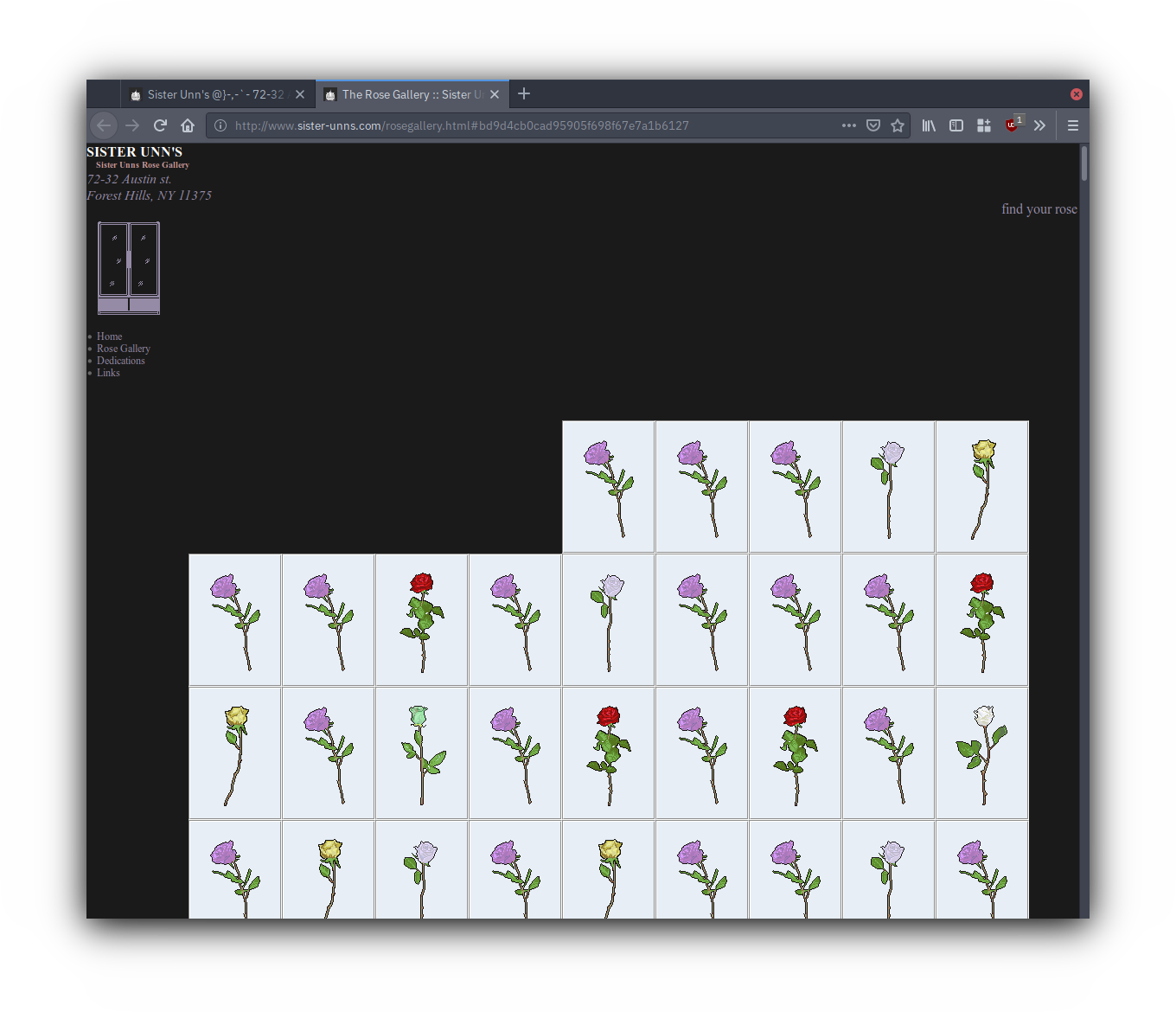This article accompanies the inclusion of Sister Unn’s (2011–2012) by Bunny Rogers and Filip Olszewski in the online exhibition Net Art Anthology and the gallery exhibition “The Art Happens Here: Net Art’s Archival Poetics,” on view at the New Museum through May 26.
MICHAEL CONNOR : How did this project begin? You’ve talked about the novel, but how important was the shop itself?
FILIP OLSZEWSKI : Bunny and I have always loved work that can exist in public space without being designated as art. Walking around Forest Hills, Queens—
BUNNY ROGERS: Where we were living.
FO : —we became very interested in all the abandoned shops among the upscale stores and restaurants. Austin Street is kinda the 5th Ave of Queens and the messy vacant spaces really stood out. Some were beautiful and came to be quite meaningful for us. They provided the initial vision for Sister Unn’s. The content of which ended up being inspired primarily by the novel Is-slottet (1963).
BR: Which is like a classic coming-of-age story, but what’s unique to the book is that it more or less begins with the characters’ death. So, it’s more about the process of dealing with loss and the stages of grief.
FO : Similarly our shop “died” an untimely death. One piece that felt successful was that a good deal of those who walked by would describe feeling as if Sister Unn’s was a memorial. We overheard words like “mausoleum” and “grief.” Some even left candles and flowers in front.
MC: Was it possible to find more information if people Googled the name of the shop?
FO: Yes, Googling would bring up the sister-unns.com website which provided additional context and references to our inspirations. It would also bring up posts, tweets, and discussions on forums made by passersby trying to figure out what the store is.

Screenshot, 2018, Firefox 63 on Linux, http://www.sister-unns.com/rosegallery.html.
BR: That’s kind of what we were going off of, the curiosity of each person that encountered the storefront. Which mirrors how things used to work online when Filip and I made websites around the mid-1990s, early 2000s, where you really had to trust your curiosity and trust the clues that people left on their websites in order to find more information or new things.
MC : As if this was a website in real space or something, in a sense, in terms of its affect?
BR
: The fact that people couldn’t enter made it a diorama, it flattened it. In a way, it was like a real life Neopets gallery.
Interview conducted by telephone and email, October 2018.
